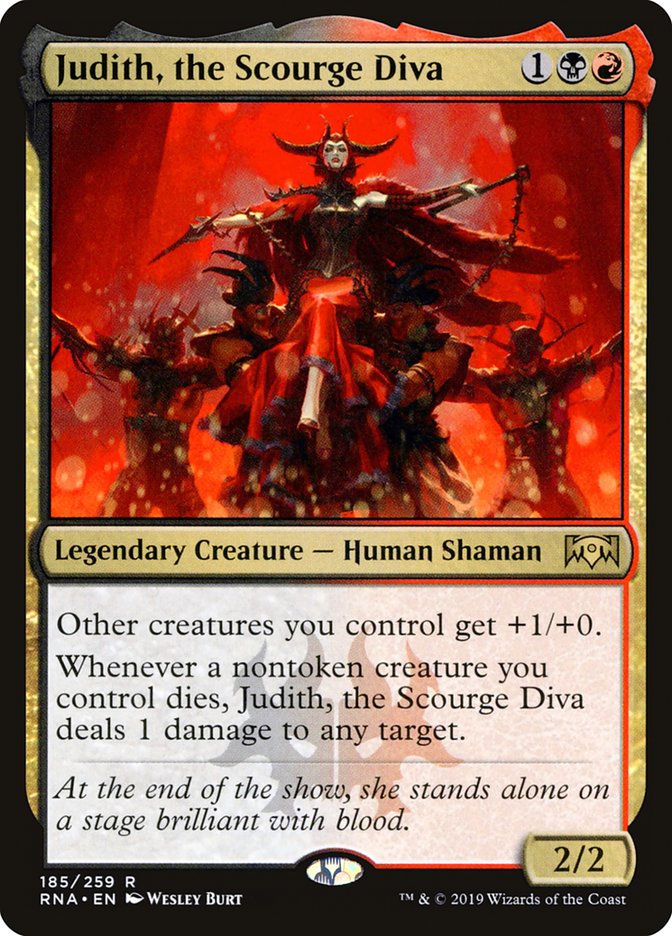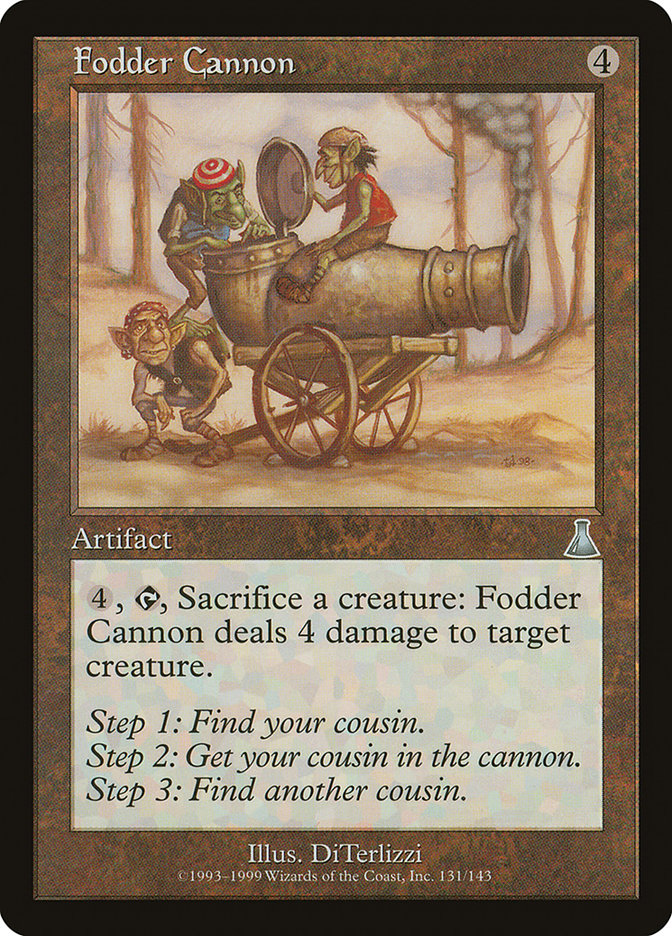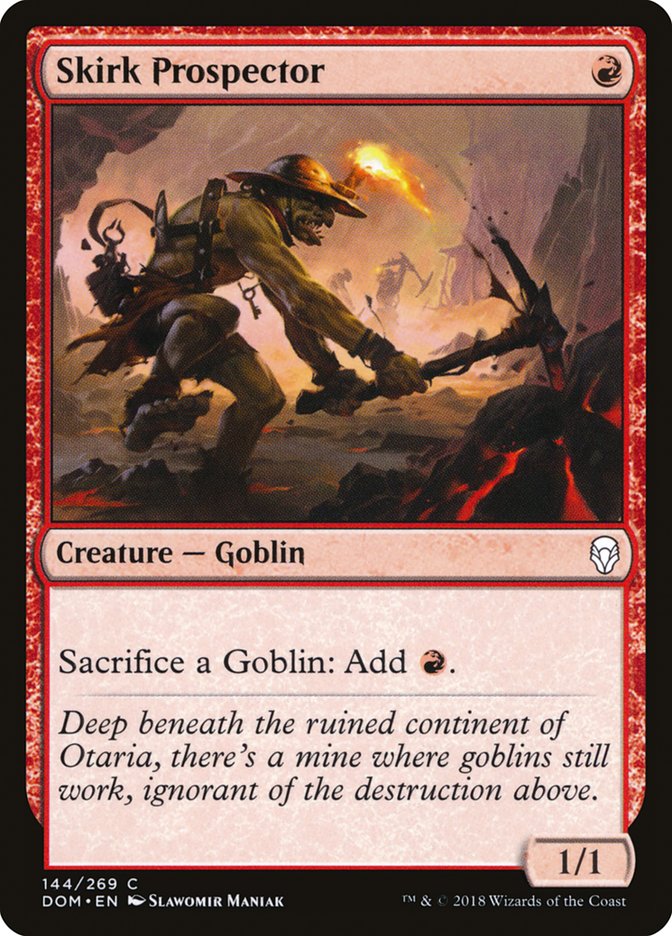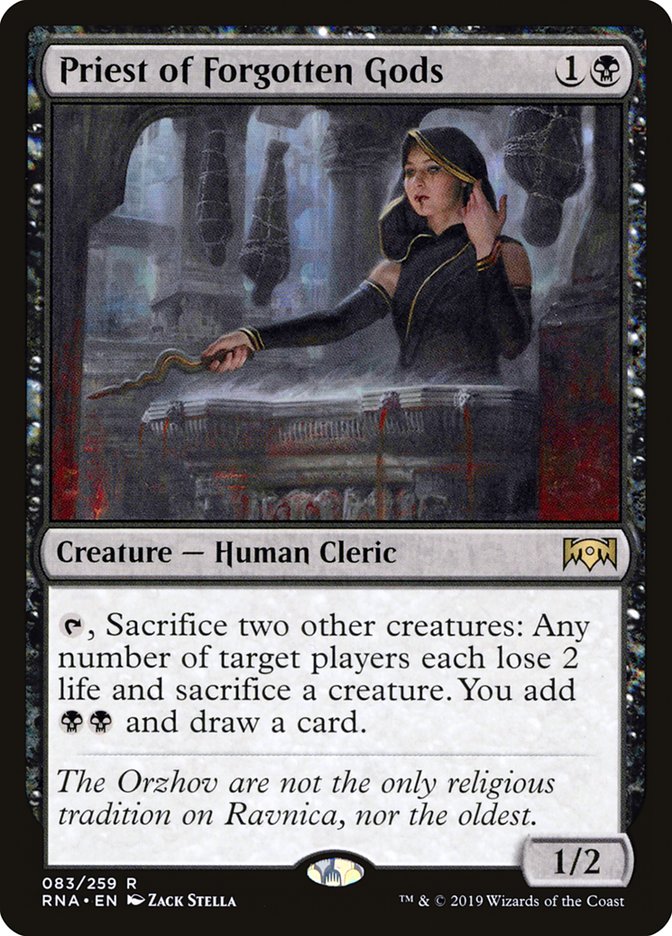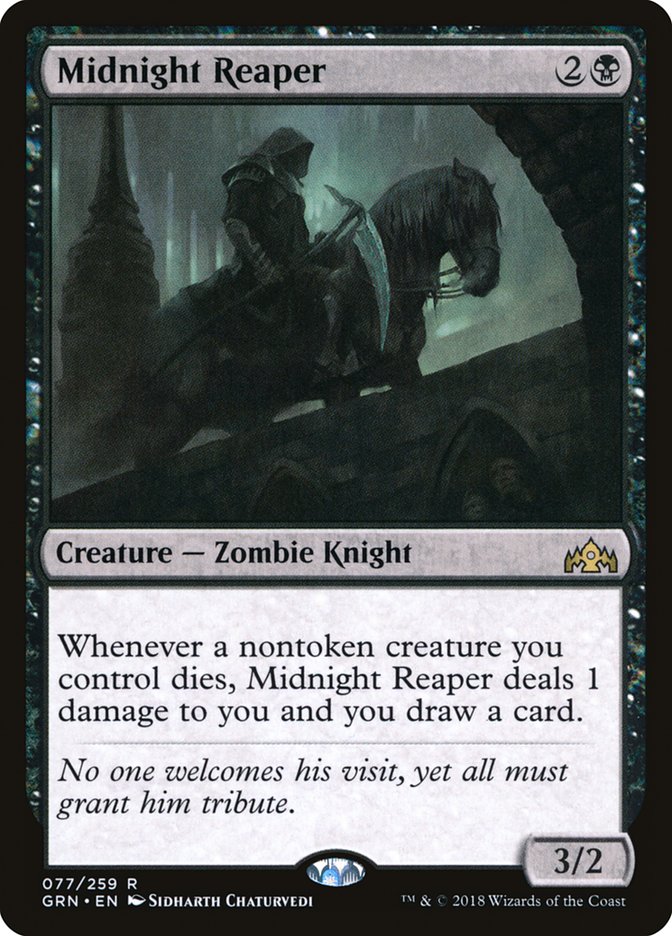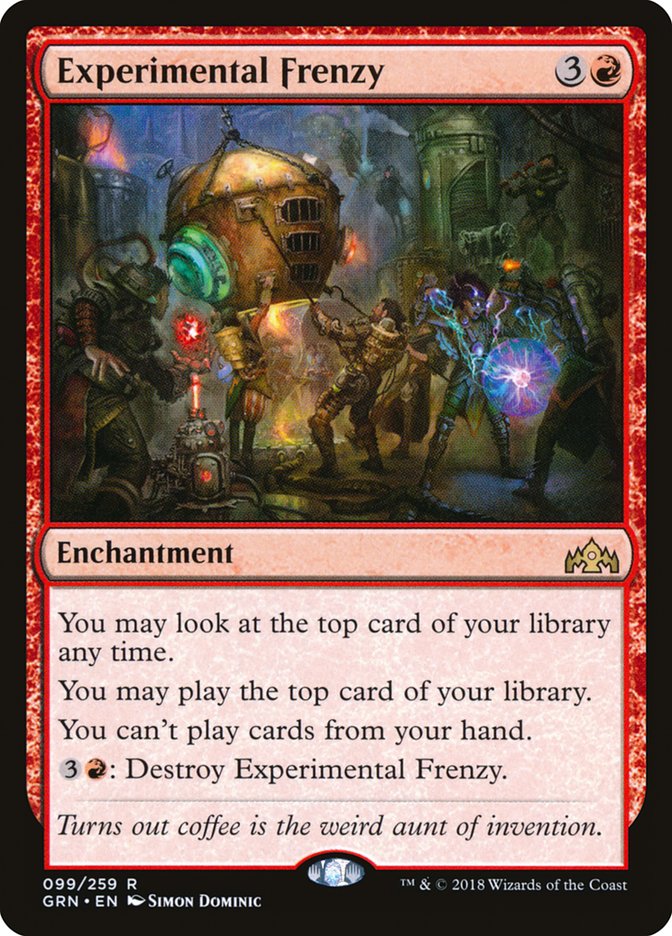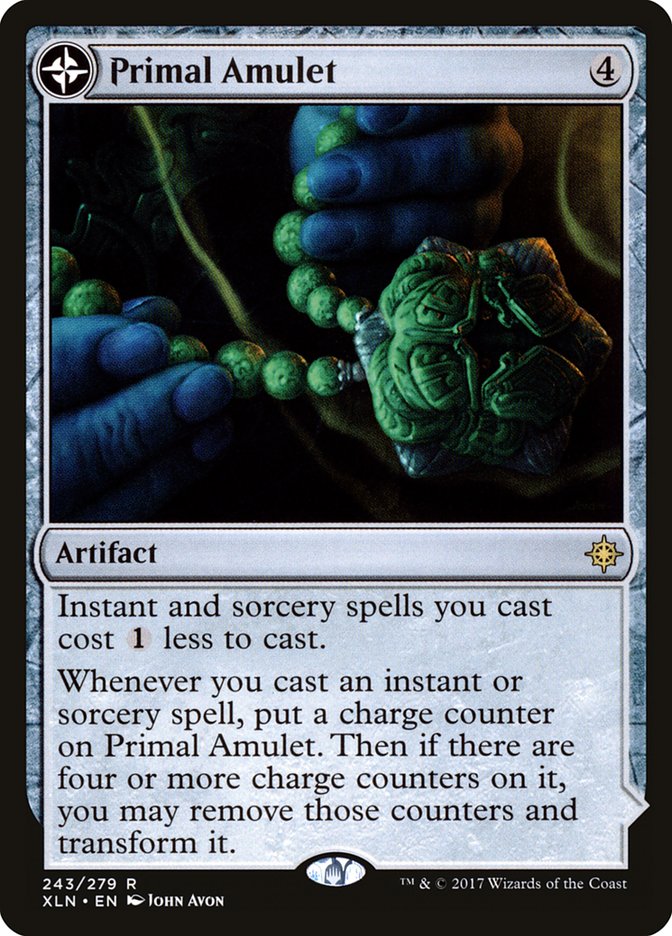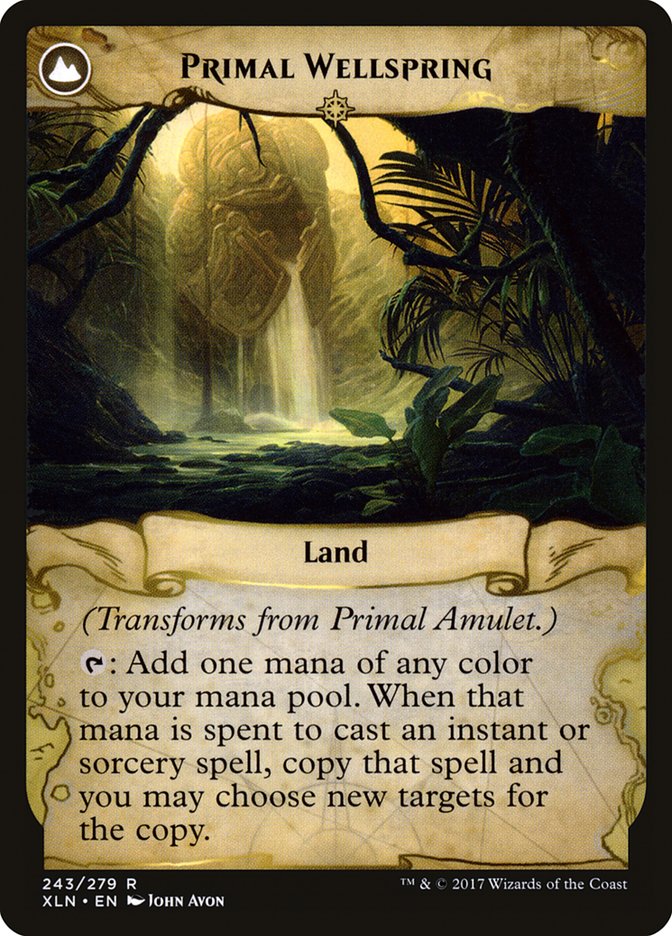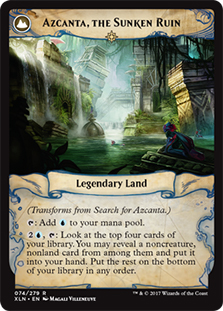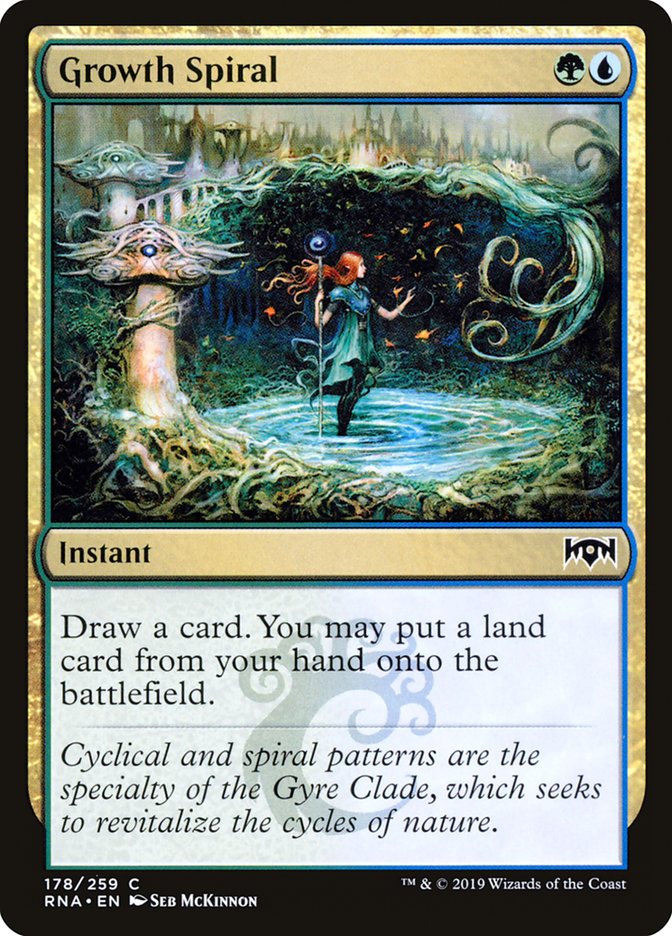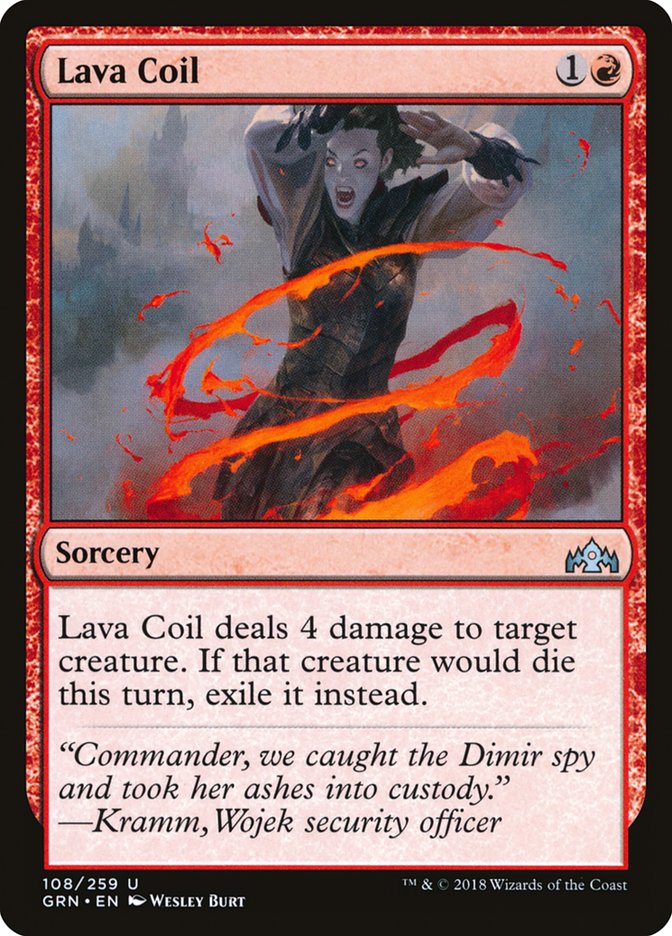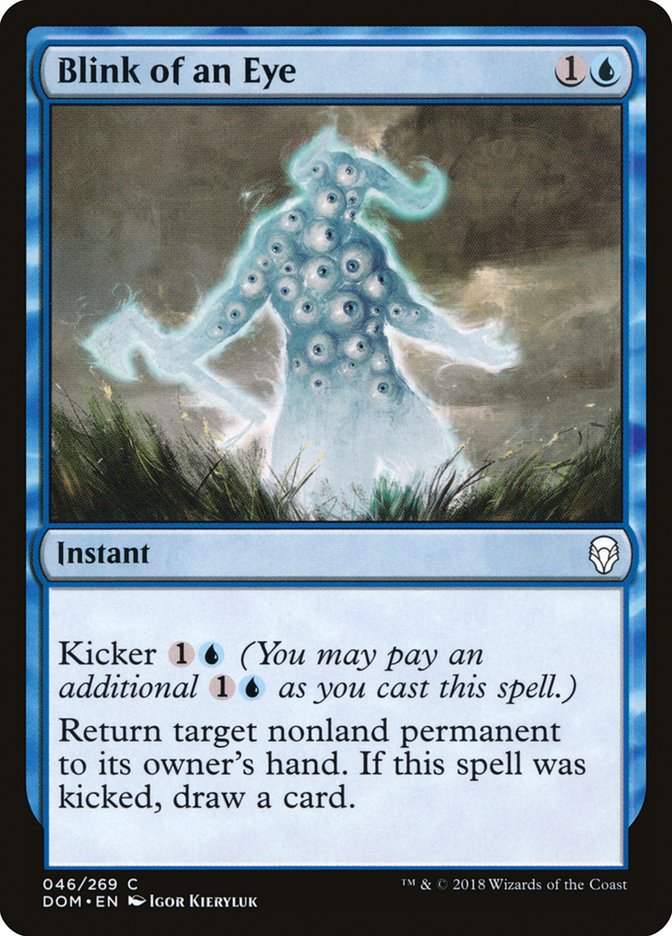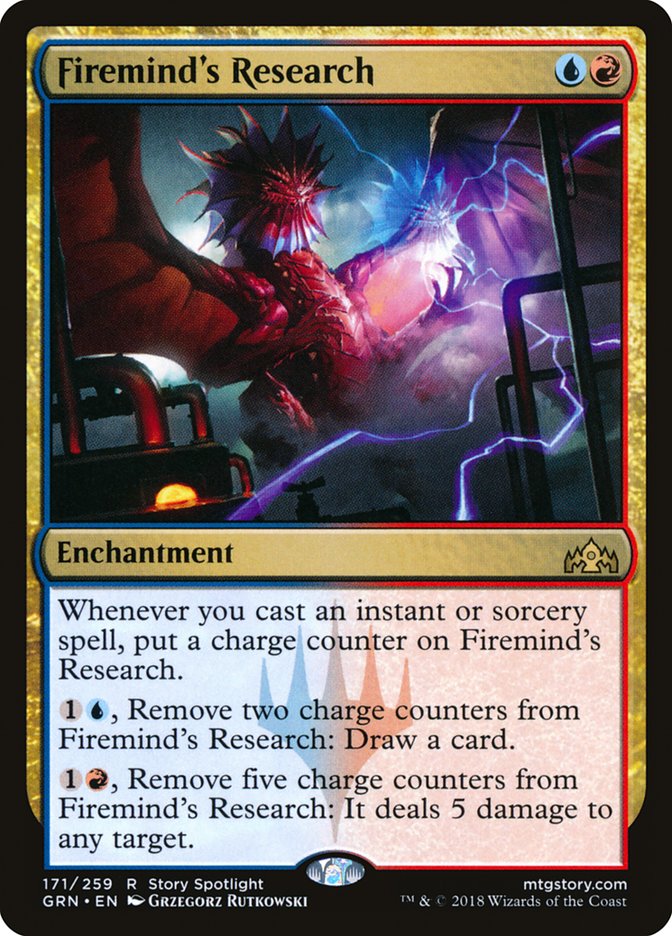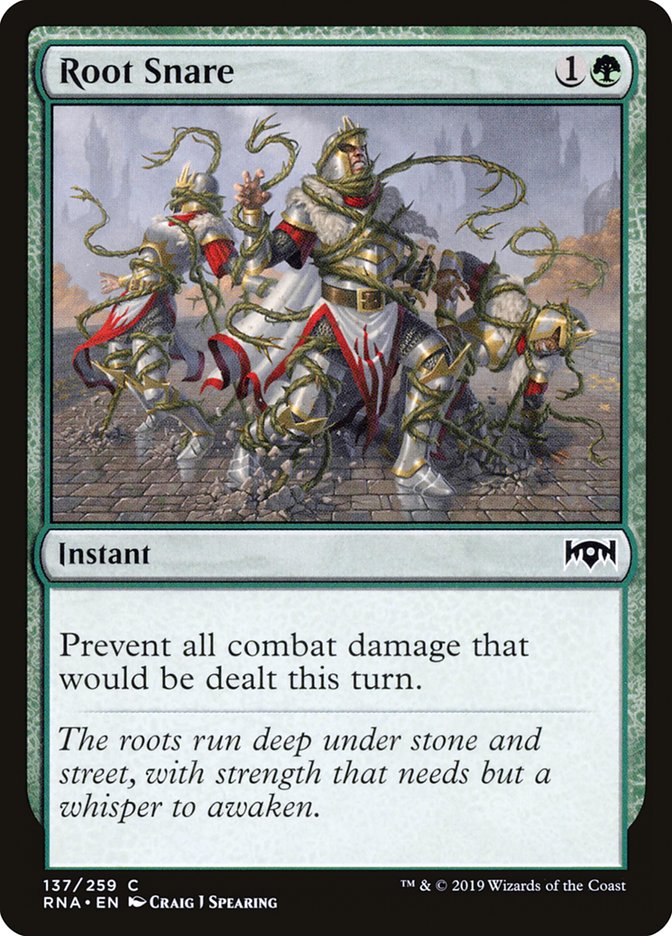The entire Ravnica Allegiance set list is here, and brewing season
is in full swing. Just think, in a little over a week, we get to start
slinging these new cards in tabletop tournaments. And if you’re into Magic
Arena, access to these cards comes even sooner than that! #MTGRNA
looks sick, and I can’t stop thinking about it and brewing with it. #SCGINDY
is the first tournament featuring the new set, and I’m confident that I’m
going to Top 8.
Why? Because I’ve already found two different strategies that have insane
potential.
Today we’re going over two archetypes and my current builds for them. This
is where it starts, and hopefully by this time next week I’ll be ready to
take the trophy home. I don’t even remember the last time I made Top 8 of
one of these things! Well, guess what? Star City Games brought back
Standard Opens on the SCG Tour, so buckle up, kiddos. I’m not losing ever
again. Y’all better be thankful Cedric is putting me in the booth.
So where do we begin?
Creatures (35)
- 3 Siege-Gang Commander
- 4 Skirk Prospector
- 4 Wily Goblin
- 4 Fanatical Firebrand
- 4 Goblin Chainwhirler
- 4 Goblin Instigator
- 4 Dark-Dweller Oracle
- 4 Midnight Reaper
- 4 Judith, the Scourge Diva
Lands (22)
Spells (3)
Sideboard

This is where I started last week. The deck felt powerful, but something
was just missing. Goblin Chainwhirler wasn’t exactly exciting in the
matchup and had very little to do with the rest of the archetype.
Regardless, I thought it was worth the inclusion with how strong it can be
against tokens.
What I didn’t account for was how badly playing Goblin Chainwhirler messed
with the manabase. It got to be pretty difficult to cast Gruesome
Menagerie, which I felt was the backbone of the deck. Gruesome Menagerie
gives you some combo-like turns that feel degenerate. I felt like this was
a great starting point, but at the time we didn’t have the full set.
Judith, the Scourge Diva is an all-star. I’ve seen it in action on VS Live!
multiple times now and it’s impressive. Earlier this week on VS Live!, Ross
cast Legion Warboss into Judith, the Scourge Diva, and his subsequent
attack step put me to eleven life. He didn’t have to do anything else. I
was just getting pummeled by the ability that everyone is overlooking!
And even though Judith’s secondary ability doesn’t work with token
creatures, her first ability is more than happy to pair with some of those
lovely little gobbos. Legion Warboss and Goblin Instigator provide a lot of
warm bodies in the early turns, giving you plenty of fodder. And if Goblins
are great at any one thing, it’s creating fodder.
The trick to making Judith, the Scourge Diva into a superhero for your
creature-based strategy is giving yourself some degenerate sequences if
your opponent chooses not to interact with you. Luckily, we already found
the two best sacrifice outlets. And no, Pitiless Pontiff is not one of
them.
Ross took a little bit of inspiration from the Goblin Menagerie deck I
played last week and came up with this little beauty.
Creatures (33)
- 3 Siege-Gang Commander
- 4 Skirk Prospector
- 3 Wily Goblin
- 4 Fanatical Firebrand
- 4 Goblin Instigator
- 4 Legion Warboss
- 3 Midnight Reaper
- 4 Judith, the Scourge Diva
- 4 Priest of Forgotten Gods
Lands (24)
Spells (3)
Sideboard

The best sacrifice outlet is a free sacrifice outlet. To be fair, I think
people figured out pretty fast that Skirk Prospector was insane alongside
Judith, the Scourge Diva and an overarching Goblin theme. After all, what
better tribe to sacrifice to her glory or utilize her pump ability? Skirk
Prospector didn’t seem all that busted in the previous Standard format, but
I kept seeing people looking to make the Goblin decks of old come back in a
big way. But until Judith, I just didn’t think that was possible. Now, I
think it’s inevitable.
Skirk Prospector was always an interesting card. Goblin decks can generate
some insane card advantage by creating a bunch of tokens or (potentially)
using their bodies as weapons. Some bring along some friends to the party,
but all of them can be sacrificed to Skirk Prospector in a pinch to get a
slight burst of mana. And when that extra mana is being used to cast
Siege-Gang Commander, the damage starts to pile up quickly.
Let’s talk about Priest of Forgotten Gods for a second. First of all, this
card reminds me a lot of Skirsdag High Priest. If you ever got to untap
with it on the third turn, chances were that your opponent was in a lot of
trouble. And while Priest of Forgotten Gods might not end the game with the
same immediacy, it certainly prevents your opponent from doing much of
anything if they haven’t deployed a threat already.
One thing I’m excited about is punishing these decks that rely on Dive
Down. Cards like Plaguecrafter are already seeing a lot more play as of
late, but I expect virtually all “Aristocrats” style decks to adopt this
weapon in high numbers. While it isn’t particularly good against token
strategies, you can still put the mana generation and card draw aspects of
this to good use. If they’re playing tokens, they likely have a few early
drops that get absolutely shattered by this ability.
So, here’s the deal: Midnight Reaper is a bit dangerous. You can almost
never cast the second one, and you have very few ways to get it off the
battlefield once you’ve cast it. If your opponent attacks you with evasive
creatures, there’s a good chance you’ll be staring down the wrong end of a
combat step in a few turns. Without more creatures like Priest of Forgotten
Gods, playing Midnight Reaper is often a liability. And I think we can do
better.
I just can’t get away from this card, it seems. And with Skirk Prospector
and Priest of Forgotten Gods, we get to have some of those crazy
Experimental Frenzy turns that you see with Runaway Steam-Kin. Since most
of our creatures are expendable, there’s a chance Experimental Frenzy is
just disgusting with the rest of our deck. After all, we’re low(ish) to the
ground and just want more raw resources at our disposal. And if we can
fight through the gluts of land, chances are we’ll find enough fodder to
have some combo-kill turns.
Here’s my first Goblin Experiment.
Creatures (33)
- 3 Siege-Gang Commander
- 4 Skirk Prospector
- 4 Wily Goblin
- 4 Fanatical Firebrand
- 4 Goblin Instigator
- 4 Legion Warboss
- 2 Plaguecrafter
- 4 Judith, the Scourge Diva
- 4 Priest of Forgotten Gods
Lands (23)
Spells (4)
Sideboard

From the initial build, we’ve changed quite a bit. And it’s possible that
I’m vastly underestimating just how integral Midnight Reaper was to the
overall strategy. I’m just convinced that Experimental Frenzy is the
perfect card for this deck, giving it the life it needs to succeed. Not a
lot else to say about this, but I should know a bit more by next week. For
now, I hope you understand that I’m learning just as much as y’all every
single time I cast one of these cards!
Go Big or Go Home
The other card I’m incredibly likely to play is Wilderness Reclamation. We
talked a good bit about the card
last week
, but I’ve already begun to learn some things. Playing a “more traditional”
version of Temur Reclamation on VS Live! today was an experiment to see if
I needed to calm down the crazy.
Creatures (2)
Lands (24)
Spells (34)
- 4 Shock
- 4 Opt
- 4 Search for Azcanta
- 4 Chemister's Insight
- 4 Expansion
- 2 Lava Coil
- 4 Discovery
- 4 Growth Spiral
- 4 Wilderness Reclamation
Sideboard

But what I actually learned from playing this deck today is that I need to
kick it up a notch.
Having both Wilderness Reclamation and Primal Amulet in the deck is like
building a Peanut Butter and Jelly sandwich. Both are solid on their own,
but they’re absolutely bonkers when you put them together. And while
Azcanta, the Sunken Ruin was one of the lands I thought would go along with
the “untap all my lands each turn” stuff, it wasn’t even in the same
ballpark as Primal Wellspring.
I was wrong and I’m sorry I ever doubted you, Primal Amulet!
The downside of playing Primal Amulet is that you must play a bit of fluff
to get things going. I’m happy to play Chemister’s Insight, since it works
so well with Wilderness Reclamation, but Radical Idea just isn’t ideal.
Regardless, if you’re going to play Primal Amulet, I think you need Radical
Idea in order to transform it easily. They just work so well together. I
think that the real challenge will be making sure we balance the fluff with
interaction, as well as powerful standalone cards. I’m often guilty of
building my decks with “too much synergy” (if there is such a thing) and
will regularly lose to “good decks.”
Well shut up about it. Just give me a little more time!
First, my initial thoughts on Search for Azcanta have felt a little off. I
thought putting an emphasis on the card was important as an avenue to
giving you extra resources when you get Wilderness Reclamation going. The
truth is that you don’t have the time to wait for it to transform on your
turn and Discovery//Dispersal didn’t seem like it deserved a spot in the
deck.
If you cast Search for Azcanta on the second turn, you’re probably doing
fine. Against control, it can help you dig for spells to continually force
an answer. The problem is that you aren’t doing much of consequence, and
one or two counterspells are likely to give you trouble anyway. Much like
Bant Nexus, we’re putting most of our eggs in one basket, and we’re not
playing a bunch of counterspells to protect ourselves.
Growth Spiral also needs another reason to be in the deck. If you’re going
to be ramping into a good play on the fourth turn, it better be something
your opponent must kill immediately or risk death. If all you’re doing is
casting Growth Spiral into an earlier Chemister’s Insight, chances are your
draw is too slow to compete with virtually any aggressive deck in the
format.
While Lava Coil is a great removal spell, I just didn’t feel like it was
giving me what I needed. Oftentimes, I would find myself untapping with
Wilderness Reclamation and just wanting/needing another instant. I’m
hesitant to cut Lava Coil for something like Lightning Strike, as it just
doesn’t kill annoyances like Enigma Drake or other four-toughness
creatures.
But I think I might have the perfect solution.
At two mana or four mana, Blink of an Eye is a perfect spell for this deck.
When you have Primal Amulet going, you get to bounce a few things back to
your opponent’s hand. When you have Wilderness Reclamation going, all you
want is to draw cards while interacting with your opponent. And in a pinch,
it takes care of tokens or buys you some time against larger threats.
If you start to think of this Temur Reclamation deck as a combo deck, you
start to realize why Blink of an Eye makes so much sense. It’s versatile in
casting cost, buys you time when necessary, cycles when you have the juices
flowing, and even protects you from something really annoying like a
maindeck way to kill your powerful artifacts and enchantments.
If it ends up being as good as I think it might be, I may even end up
playing four. Ah screw it. Let’s build and try it out!
Lands (24)
Spells (36)
- 4 Shock
- 4 Opt
- 4 Primal Amulet
- 2 Fiery Cannonade
- 3 Blink of an Eye
- 4 Radical Idea
- 4 Chemister's Insight
- 4 Expansion
- 3 Growth Spiral
- 4 Wilderness Reclamation
Sideboard

All credit for this one goes to my wife, Kali. Whenever a new set comes
out, she lets me bounce ideas off her, helps me look up cards on color for
themes I’m building around, and just listens to me rant. And tonight, she
said, “What about Firemind’s Research? Seems really good with Wilderness
Reclamation!”
This card saw a little sideboard play at the beginning of the last Standard
season, often acting as an early threat from Izzet decks that were tough
for control opponents to interact with. Firemind’s Research is going to
(hopefully) help us obliterate our control opponents, as it’s possibly the
most disgusting mana sink I’ve seen in quite some time. Though a little too
slow on its own for the maindeck (and I could be wrong about that), I think
Firemind’s Research is gonna bury’em.
The only problem I ever had with Firemind’s Research was that it was a bit
too mana intensive. But with Wildnerness Reclamation, it’s nothing short of
stellar.
I honestly thought about this card because people kept saying stuff about
Bant being good. Personally, I’ve never liked any deck that cast Fog, but
there’s a chance we should be going super hard on the combo angle and just
use Root Snare to guarantee that we’re able to survive long enough to start
throwing the haymakers.
The problem with cards like Root Snare is that you’re burning a card and
not containing your opponent’s side of the battlefield. The rough part for
Temur is that you don’t really have a good sweeper effect. It’s very easy
for aggressive decks to go over the top of Fiery Cannonade. By the end of
the last Standard format, most players had stopped relying on Fiery
Cannonade altogether, instead opting for a ramp-into-Niv plan using
Treasure Map and spot removal. And it worked very well.
So, while I really dislike Bant because you have good sweepers, I’m
actually starting to warm up to the prospect of cutting all the hard
removal and just playing 6-8 Fog effects. After all, I can just dump them
to Chemister’s Insight or Radical Idea against the matchups where they’re
not so hot. And in matchups where they’re good, I’m more than happy to draw
them in multiples.
If I do end up as a Temur Fog deck, a few things will have to change. We’ll
need Search for Azcanta back, and we’ll likely want some number of Nexus of
Fate. It’s going to take some time and some play to see if moving in that
direction is actually necessary or if I’m being paranoid about running a
pet deck up against aggressive strats over and over.
I’m going to try Fiery Cannonade to start out, but there’s a chance I’m a
full-blown Primal Fog deck by the end of the week. I guess you’ll just have
to check in next time and find out!


